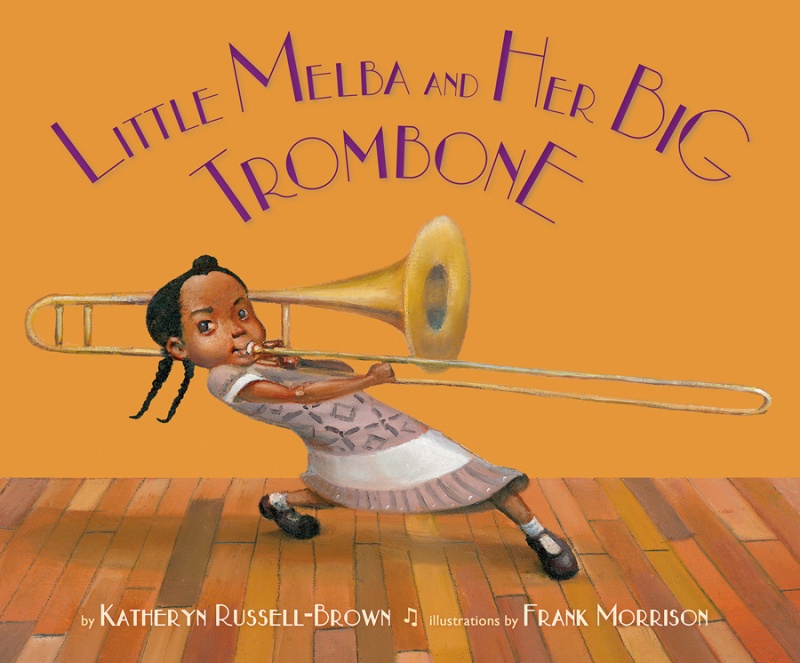09 Nov / Little Melba and Her Big Trombone by Katheryn Russell-Brown, illustrated by Frank Morrison

 Dizzy Gillespie. Billie Holiday. Quincy Jones. Duke Ellington. They’re all household names, right? The list goes on: Count Basie, Tony Bennett, Aretha Franklin, Ray Charles, and so many more. So why is Melba Doretta Liston, who not only played with, but also composed and arranged music for, so many of these all-time greats not remembered in the same easy breath?
Dizzy Gillespie. Billie Holiday. Quincy Jones. Duke Ellington. They’re all household names, right? The list goes on: Count Basie, Tony Bennett, Aretha Franklin, Ray Charles, and so many more. So why is Melba Doretta Liston, who not only played with, but also composed and arranged music for, so many of these all-time greats not remembered in the same easy breath?
Thank goodness Florida law professor Katheryn Russell-Brown decided to teach the children early about this vanguard genius (and multi-culti superpublisher Lee & Low gave her the platform). Born in 1926 in Kansas City, young Melba’s mind was filled with music day and night. She chose the trombone for herself at age 7, inspired by Grandpa John and his guitar and encouraged by Momma Lucille and her unlimited pride. At 8, Melba played on the local radio station. At 11, she moved to Los Angeles and skipped from sixth grade to eighth. By high school, she was the star player in the afterschool music club. At 17, with Momma Lucille’s hugs and blessings, Melba began touring the country with jazz trumpeter Gerald Wilson and his new band.
Life on the road was not always easy – loneliness haunted her, envious men taunted her, ignorant crowds ignored her. Traveling in the South of the 1940s and ’50s was never easy. The music, however, went on and on: “Melba and her music trotted around the globe, dazzling audiences and making headlines in Europe, the Middle East, and Asia … Melba Doretta Liston was something special.” Indeed.
As groundbreaking as her performances were, the rest of Melba’s life was no perfect fairy tale. What Russell-Brown’s text mentions, illustrator Frank Morrison enhances: the “[j]ealous boys [who] called her bad names” in high school become slyly-turned shrunken faces behind Melba’s exuberant playing; “lonely” leaves Melba standing small, apart, and forgotten by the laughing crowds; the “white folks [who] didn’t show good manners” are manifest in the oversized signs emblazoned with “The Best Service for WHITES ONLY” that can’t be ignored even from the back of a bus. But Morrison also knows how to add soul-soothing rhythm to the page: take that cover with young Melba barely grown enough to hold that instrument, then compare it to the final double-page spread in which an adult Melba takes the same leaned-waaay-back, feel-the-stirring-sounds stance decades later and wows a sold-out audience of thousands. She’s lost her pigtails, her short dress, her Mary Janes, but her vitality and passion never leave her music.
Russell-Brown’s “Afterword” fills in more of Melba’s seven-decades of collaborations, accomplishments, and honors. The “Selected Discography” and “Author’s Sources” encourage curious audiophiles to listen and explore further. Given Melba’s indisputable talent, one wonders what her career might have looked like had she been born just a few decades later. Perhaps all those who benefited from her musical prowess then, might today be mere back-up for the headliner known as Melba Doretta Liston.
Readers: Children
Published: 2014
